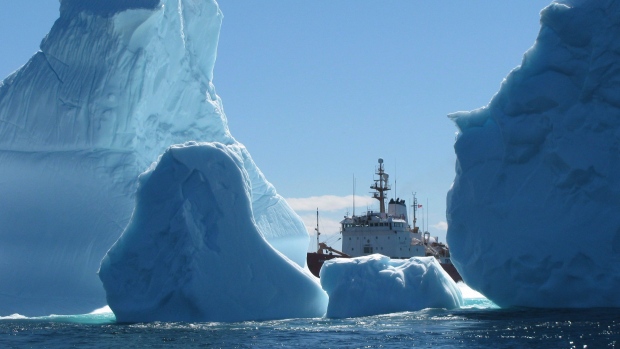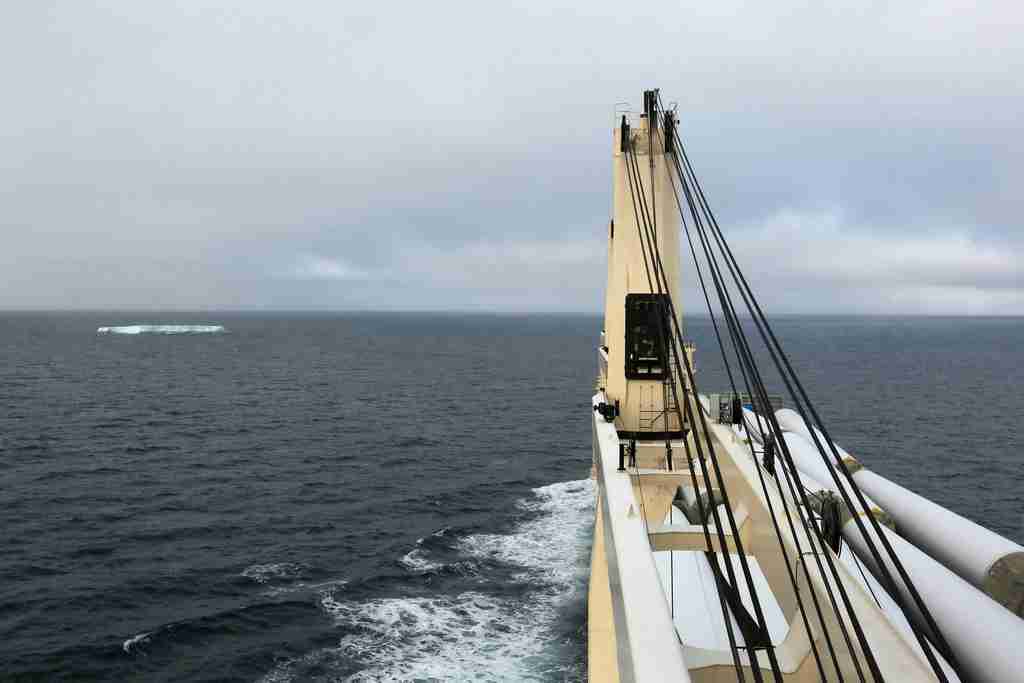


[File photo]
Following Chinese cargo ship Tianjian’s successful passage through the Vilkitsky Strait on Sept. 18, one of the most dangerous fairways of the Arctic Northeast Passage, China has sent five commercial vessels this year to test the feasibility of the new trade route, which can significantly reduce the time and costs of transportation between China and Europe.
The Northeast Passage, which is a shipping route along the Arctic Ocean coasts of Norway and Russia that stretches to the Pacific Ocean, has ignited the interest of many Chinese companies, as warming temperatures melt the icebound route in summer, creating a new path that can save time and costs of travel between ports in East Asia and Europe.

Chinese cargo ship Tianjian’s successfully traveled through the Vilkitsky Strait on Sept. 18. [Photo\Xinhua]
“By taking the Northeast Passage, it took only 25 days to travel from China’s Lianyungang to Denmark’s Esbjerg. Compared to the traditional Suez Canal route, this new route has saved us 12 days and 320 tons of fuel, reducing carbon dioxide emissions by more than 1,000 tons,” Shen Jianxin, the Capitan of the Tianjian, told Xinhua News Agency.
In addition to lower costs and shorter distances, the Northeast Passage has also provided a safer waterway for vessels in summer. By taking traditional maritime routes from Asia to Europe, cargo ships may face dangers caused by the southwest monsoons in the Indian Ocean, as well as threats by pirates, while the new route can easily avoid such problems.
The convenient waterway has led to a boom in volume of freight traffic in the region. According to Xinhua News Agency, 297 vessels have passed through the Northeast Passage in 2016, a number that has increased 35 percent compared to the previous year. Experts project that due to global warming, there will be more vessels using this new route to travel between China and Russia and between China and Europe.
Chinese vessels conducted their first voyage through the Northeast Passage in 2013. Since then, 10 Chinese vessels have regularly used the new route, conducting 14 missions. The five cargo ships traveling through the passage this year are mainly carrying goods, such as equipment and steel, but are also testing the possibility of normalizing the new route.
 Fire brigade in Shanghai holds group wedding
Fire brigade in Shanghai holds group wedding Tourists enjoy ice sculptures in Datan Town, north China
Tourists enjoy ice sculptures in Datan Town, north China Sunset scenery of Dayan Pagoda in Xi'an
Sunset scenery of Dayan Pagoda in Xi'an Tourists have fun at scenic spot in Nanlong Town, NW China
Tourists have fun at scenic spot in Nanlong Town, NW China Harbin attracts tourists by making best use of ice in winter
Harbin attracts tourists by making best use of ice in winter In pics: FIS Alpine Ski Women's World Cup Slalom
In pics: FIS Alpine Ski Women's World Cup Slalom Black-necked cranes rest at reservoir in Lhunzhub County, Lhasa
Black-necked cranes rest at reservoir in Lhunzhub County, Lhasa China's FAST telescope will be available to foreign scientists in April
China's FAST telescope will be available to foreign scientists in April "She power" plays indispensable role in poverty alleviation
"She power" plays indispensable role in poverty alleviation Top 10 world news events of People's Daily in 2020
Top 10 world news events of People's Daily in 2020 Top 10 China news events of People's Daily in 2020
Top 10 China news events of People's Daily in 2020 Top 10 media buzzwords of 2020
Top 10 media buzzwords of 2020 Year-ender:10 major tourism stories of 2020
Year-ender:10 major tourism stories of 2020 No interference in Venezuelan issues
No interference in Venezuelan issues
 Biz prepares for trade spat
Biz prepares for trade spat
 Broadcasting Continent
Broadcasting Continent Australia wins Chinese CEOs as US loses
Australia wins Chinese CEOs as US loses